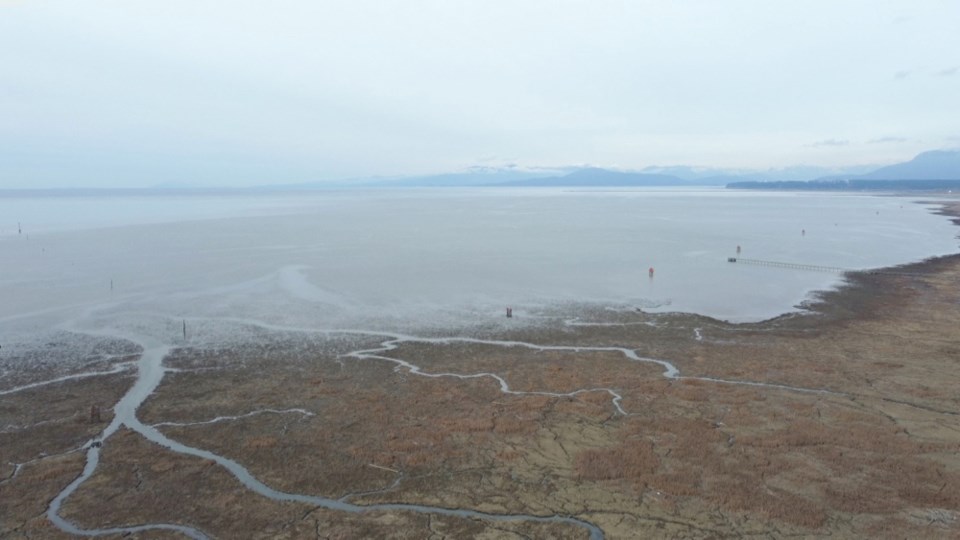The Rivershed Society of BC has released a graphic rendering that visually demonstrates the potential for a bold restoration initiative to restore the Fraser Estuary’s Sturgeon Bank near Richmond.
The rendering features the proposed Sturgeon Bank Sediment Enhancement Pilot Project, led by Ducks Unlimited Canada, Tsawwassen First Nation, Raincoast Conservation Foundation, and the Lower Fraser Fisheries Alliance. The group is proposing to pilot an innovative concept to pump sediment, currently lost to sea, back onto the Sturgeon Bank foreshore – mimicking natural processes, restoring receding marsh ecosystems and protecting communities from rising tides and flooding.
Since the 1980s, more than 260 hectares of tidal marsh has been lost in the Fraser Delta. The marsh is a critical component of the Fraser Estuary that has sustained Indigenous Nations for millennia, is recognized internationally for its biodiversity, and is increasingly valued for sequestering carbon and protecting coastal communities from flooding. Communities throughout the Fraser Delta are now preparing for one metre of sea-level rise by 2100 and two metres by 2200. Dikes, a traditional form of flood protection, often result in significant harm to wildlife habitat, including critical habitat for juvenile salmon.
The Sturgeon Bank Pilot Project provides an alternative, nature-based method of coastal protection that also benefits natural ecosystems by restoring marshland.
“Our plan is to use a temporary sediment delivery pipeline to pump sediment from the Fraser River directly onto the southern Sturgeon Bank foreshore to increase the bank’s elevation and reduce stress on marsh vegetation over an area up to 40 hectares,” said Eric Balke, Ducks Unlimited Canada.
The report image released is the first in a series of graphics that will demonstrate how restoring the Lower Fraser can create resilient ecosystems where salmon, people, and economies flourish.
“Coastal communities are making decisions about how to prepare for sea-level rise, but there is no plan for the ecosystems outside the dike. It is important that people in these communities understand the options available. This rendering shows communities how restoration projects can look and feel,” said Justine Nelson, Executive Director of the Rivershed Society of BC.



